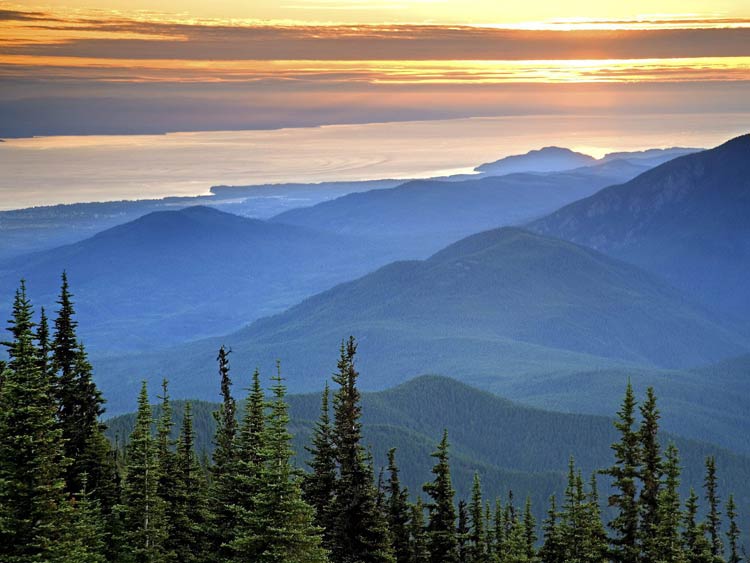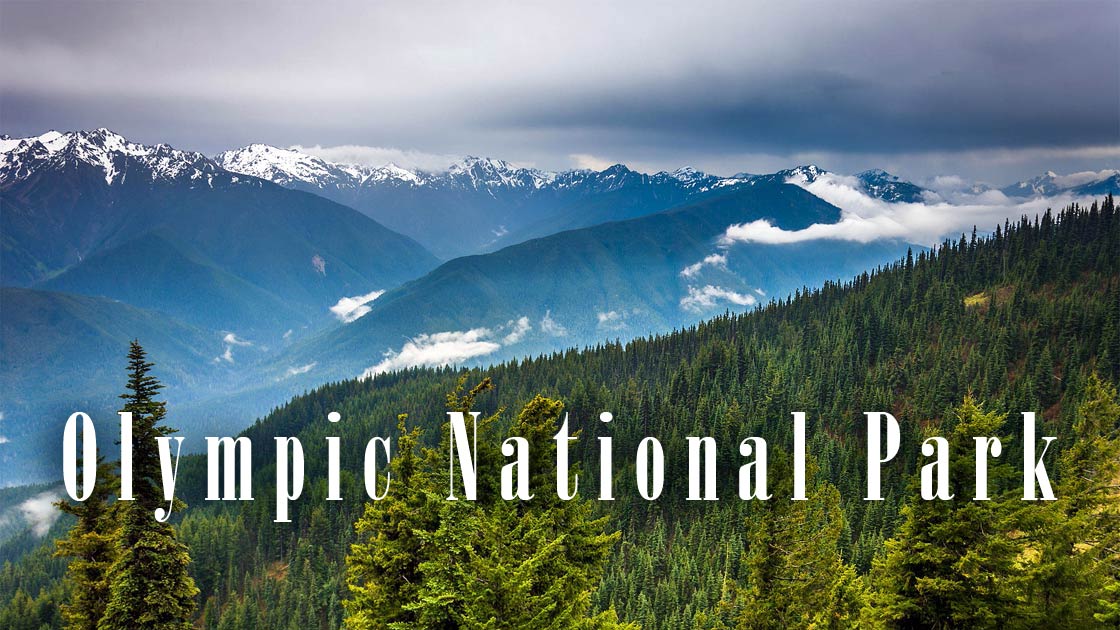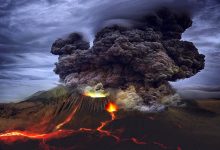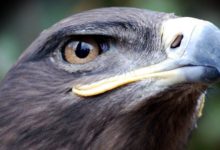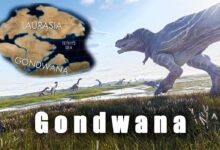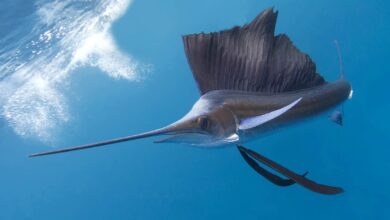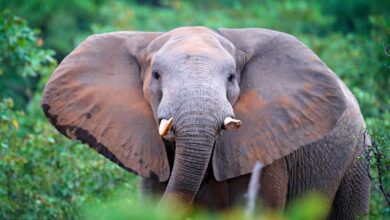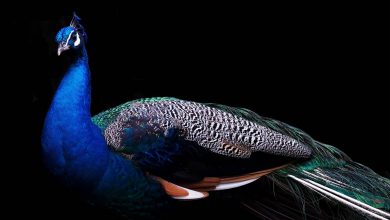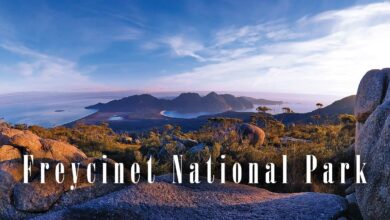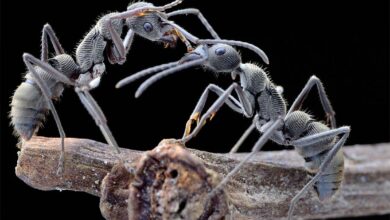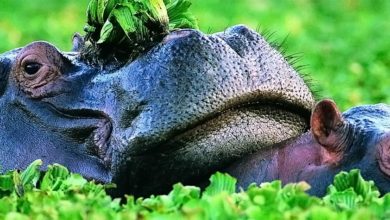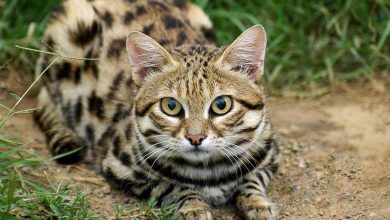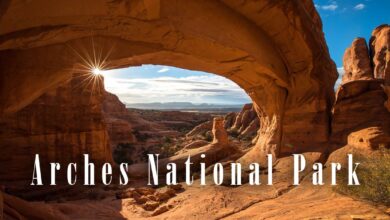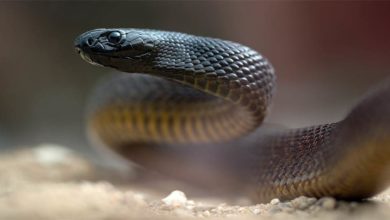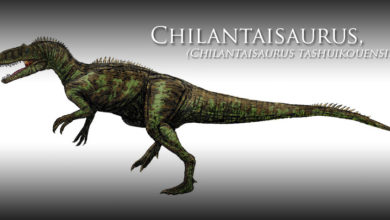The Magic of Olympic National Park: A Journey Through Time and Nature
Olympic National Park is a large protected area in Washington State, USA, known for its diverse landscapes, including rugged coastline, old-growth temperate rainforests, and snow-capped peaks. Established in 1938, it covers over 922,000 acres of land and attracts visitors for outdoor recreation, such as hiking, camping, and wildlife viewing. The park is home to a variety of plant and animal species, including the Olympic marmot and the Roosevelt elk.
Olympic National Park is a unique and diverse natural area located in the northwestern part of the United States, in the state of Washington. The park encompasses nearly a million acres of land, and is home to a variety of ecosystems, including glaciated mountains, a temperate rainforest, and a rugged coastline.
The park’s mountains, including Mount Olympus, are some of the most glaciated peaks in the lower 48 states, and are home to a variety of wildlife, including mountain goats and pikas.
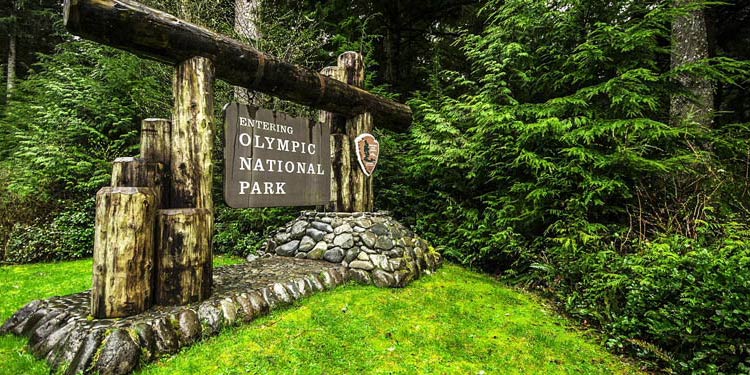
Discover the diverse landscapes and abundant wildlife of Olympic National Park
The park’s rainforests, such as the Hoh and Quinault Rainforests, are some of the largest contiguous temperate rainforests in the world, and are home to giant trees, such as Sitka spruce and Western red cedar, and a diverse array of plant and animal species.
The park’s coastline is rugged and wild, with sea stacks, tide pools, and long stretches of sandy beaches. The park’s rivers and streams, including the Elwha and Hoh Rivers, are home to runs of salmon and steelhead, and are important habitats for other aquatic species.
Olympic National Park is known for its high level of biodiversity and its unique and pristine ecosystems. It is also home to several species of fish and mammals that are found only in the Olympic Peninsula region, making it an important area for conservation and research. The park is a popular destination for outdoor enthusiasts, who come to hike, camp, fish, and explore the park’s diverse natural beauty.
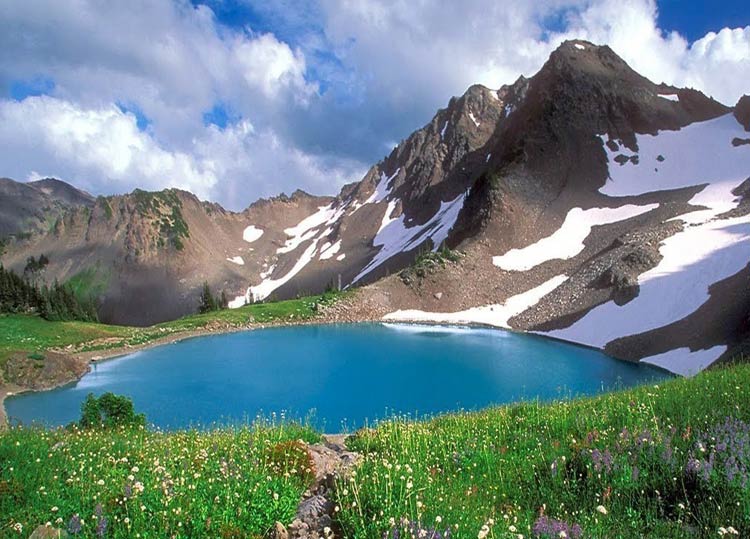
Location
Olympic National Park is located in the Olympic Peninsula on the Olympic Peninsula in Washington state, USA.
History and name of the Park
Olympic National Park was established on June 29, 1938 and is named after the Olympic Mountains, which run through the park. It was initially designated as a national monument in 1909 and then re-designated as a national park in 1938. The park was created to preserve diverse natural landscapes and wildlife, including old-growth forests, glaciers, and other unique features. The name “Olympic” refers to the Olympic Mountains, named after Mount Olympus in Greece.
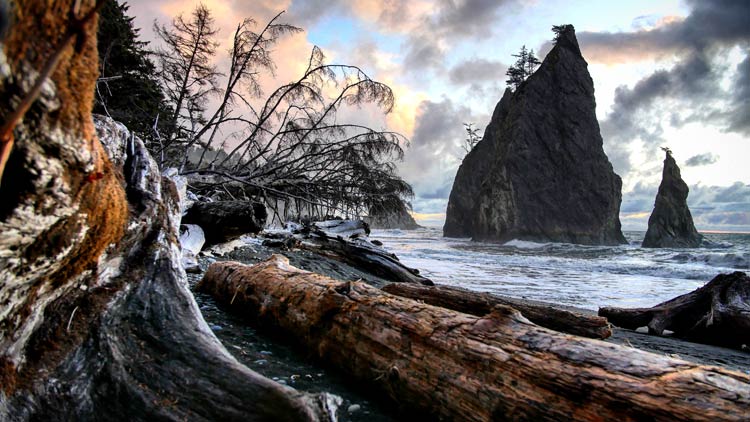
Basic Facts About Olympic National Park
- Location
Olympic National Park is located in the northwestern part of the United States, in the state of Washington. - Size
The park covers nearly a million acres (4,028 square kilometers). - Established
Olympic National Park was established in 1938. - Ecosystems
The park contains a variety of ecosystems, including glaciated mountains, temperate rainforest, and a rugged coastline. - Mountains
The park’s mountains, including Mount Olympus, are some of the most glaciated peaks in the lower 48 states. - Rainforests
The park’s rainforests, such as the Hoh and Quinault Rainforests, are some of the largest contiguous temperate rainforests in the world. - Coastline
The park’s coastline is rugged and wild, with sea stacks, tide pools, and long stretches of sandy beaches. - Rivers and streams
The park’s rivers and streams, including the Elwha and Hoh Rivers, are important habitats for fish and other aquatic species. - Biodiversity
Olympic National Park is known for its high level of biodiversity and its unique and pristine ecosystems. - Activities
The park is a popular destination for outdoor enthusiasts, who come to hike, camp, fish, and explore the park’s diverse natural beauty.
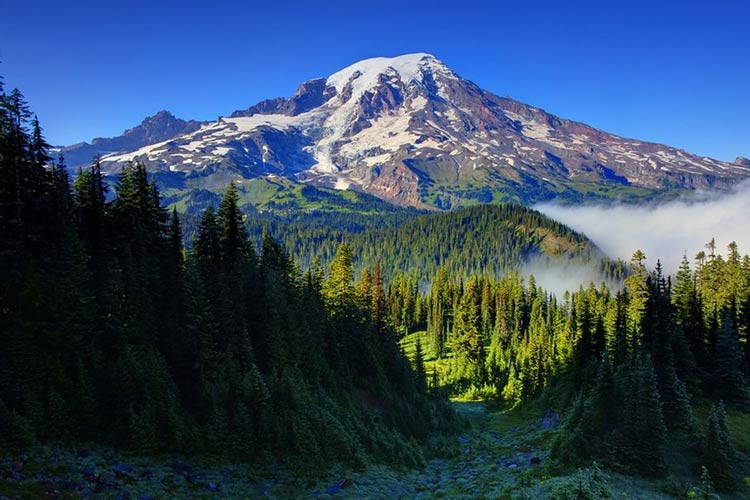
Geography
Olympic National Park is located on the Olympic Peninsula in Washington state, USA and covers an area of 3,733.8 km2 (922,650 acres). The park is known for its diverse landscapes including rugged coastline, glaciers, and old-growth temperate rainforests. The park is surrounded by the Olympic National Forest, and the Olympic Mountains run through the park. The highest point in the park is Mount Olympus, which stands at 7,965 feet. The park also contains several rivers and streams, including the Hoh River, Quinault River, and Sol Duc River.
Coastline
Olympic National Park has a rugged coastline with a mix of sandy beaches and rocky cliffs, which stretch for about 73 miles along the Pacific Ocean. The coastline is known for its natural beauty, with towering cliffs, sea stacks, and tidal pools. Some of the most popular attractions along the coast include Ruby Beach, Rialto Beach, and La Push Beach. The coast is also home to a variety of wildlife, including sea otters, harbor seals, and gray whales. Visitors to the Olympic National Park coastline can enjoy outdoor recreation such as hiking, beachcombing, and wildlife viewing. The park’s coastline is considered a prime example of a protected, natural coastal ecosystem.
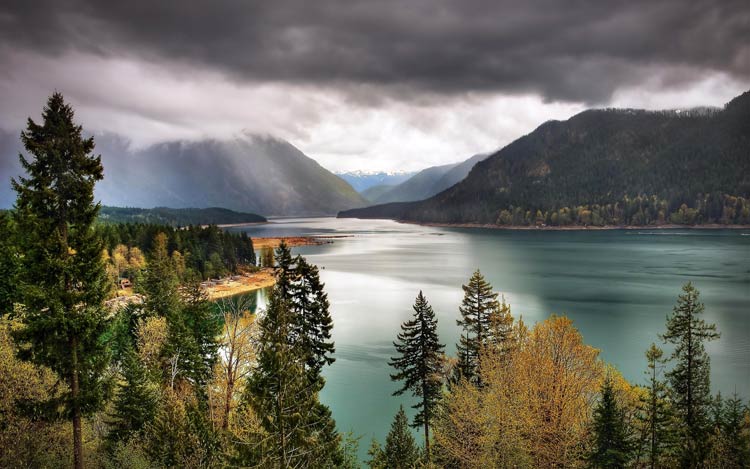
Temperate rainforest
The temperate rainforest in Olympic National Park is a unique ecosystem characterized by high rainfall, old-growth trees, and a diversity of plant and animal species. The rainforest covers about 400,000 acres in the park and is one of the largest remaining temperate rainforests in the world.
The forest is dominated by large conifers, including Douglas fir, Sitka spruce, and western hemlock, and supports a rich understory of ferns, shrubs, and other plants. The temperate rainforest is home to a variety of wildlife, including the Roosevelt elk, black bear, and the Olympic marmot. The park’s rainforest is a popular destination for hiking, camping, and wildlife viewing, and is considered a prime example of a protected, natural temperate rainforest ecosystem.

Features of the park
- Glaciated Mountains
The park’s mountains, including Mount Olympus, are among the most glaciated peaks in the lower 48 states. - Temperate Rainforest
The park contains several large contiguous temperate rainforests, including the Hoh and Quinault Rainforests. - Rugged Coastline
The park’s coastline is known for its ruggedness, with sea stacks, tide pools, and long stretches of sandy beaches. - Rivers and Streams
The park’s rivers and streams, such as the Elwha and Hoh Rivers, are important habitats for salmon and steelhead, and provide opportunities for fishing and water-based recreation. - Biodiversity
The park is home to a high level of biodiversity, with numerous plant and animal species that are unique to the Olympic Peninsula region. - Wilderness
The park contains designated wilderness areas that are only accessible by foot, providing visitors with opportunities for backcountry hiking and camping. - Historical and Cultural Sites
The park contains several historical and cultural sites, including the Elwha Valley, which is significant to the Lower Elwha Klallam Tribe. - Scenic Drives
The park features several scenic drives, including the Hurricane Ridge Road and the Hoh River Road, which provide visitors with breathtaking views of the park’s mountains and forests.
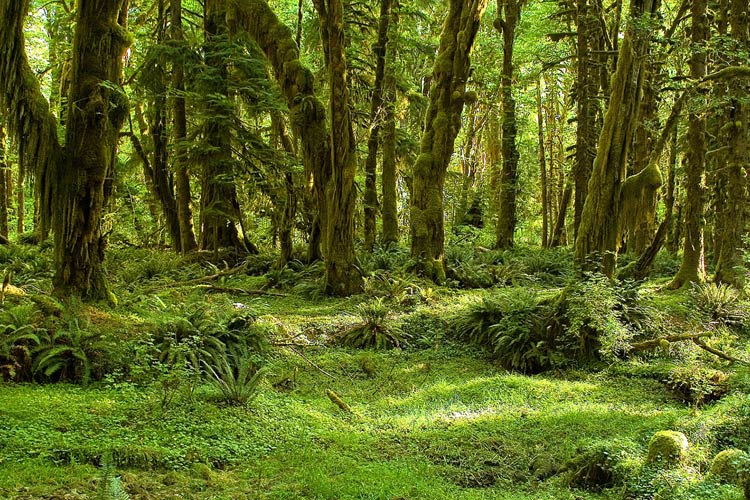
Geology
Olympic National Park is located on the Olympic Peninsula and is characterized by diverse geology, including the Olympic Mountains, which were formed by uplift and glacial erosion. The mountains are composed of a variety of rock types including metamorphic, sedimentary, and volcanic rocks.
The park is also home to several glaciers, which have carved out valleys and created numerous glacial lakes. The park’s coastline is characterized by rocky cliffs and headlands, formed by tectonic uplift and erosion. The geology of the park has created diverse habitats for plants and animals, including old-growth forests, alpine meadows, and coastal ecosystems.
Glaciated mountains
Olympic National Park is home to several glaciated mountains, including Mount Olympus, which is the tallest peak in the park and stands at 7,965 feet. The glaciers in the park are remnants of the last ice age and have shaped the landscape through erosion, carving out valleys and creating numerous glacial lakes.
These glaciers continue to slowly melt and retreat, which has a significant impact on the park’s hydrology, geology, and ecology. The glaciated mountains of Olympic National Park offer opportunities for outdoor recreation, including hiking, camping, and backpacking. They also provide habitat for a variety of plant and animal species, including some that are unique to this area.
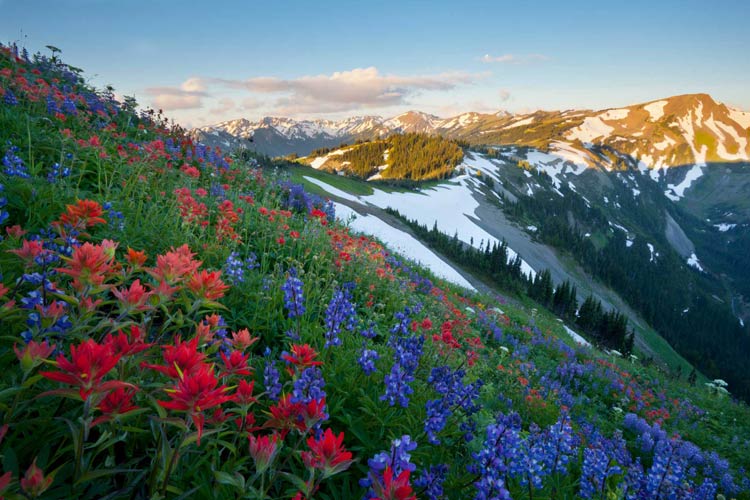
Climate and temperature
Olympic National Park has a temperate marine climate, which is characterized by mild, wet winters and cool, dry summers. The park’s location on the Olympic Peninsula and the influence of the Pacific Ocean result in a high level of rainfall, with some areas receiving over 140 inches of precipitation per year. The park’s elevation and topography result in a range of microclimates, with temperatures varying depending on location and altitude.
Along the coast, temperatures are typically cool and moist, while the high peaks of the Olympic Mountains can experience subalpine conditions with snow and freezing temperatures. The park’s temperate marine climate supports the growth of the old-growth temperate rainforest and the presence of glaciers, and is considered a significant factor in the park’s unique ecology and biodiversity.
The temperature in Olympic National Park varies depending on location and altitude. Along the coast, temperatures are typically cool, with average summer highs in the mid-60s to low-70s°F (15-25°C) and average winter lows in the mid-40s to low-50s°F (5-12°C). In the rainforest, temperatures are mild, with average summer highs in the mid-60s to low-70s°F (15-25°C) and average winter lows in the mid-40s to low-50s°F (5-12°C).
At higher elevations in the Olympic Mountains, temperatures can be colder, with average summer highs in the 50s°F (10-15°C) and average winter lows in the 20s°F (-5-0°C). The park’s temperate marine climate, location, and topography result in a range of microclimates, and temperatures can vary greatly depending on location and time of year.
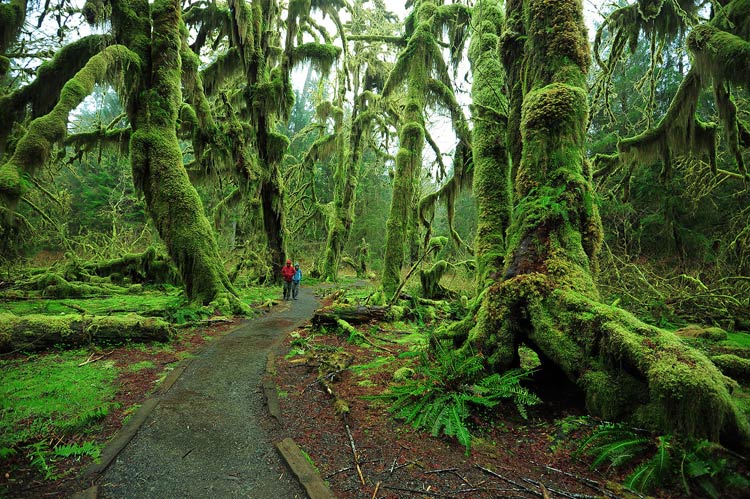
Flora in Olympic National Park
The flora of Olympic National Park is diverse and abundant, with a variety of plant communities found throughout the park. The park’s forests are dominated by tall conifers such as Sitka spruce, Western hemlock, Douglas fir, and Western red cedar. These trees create a canopy that shades the forest floor, creating a moist and cool environment that supports an understory of shrubs, ferns, and wildflowers.
One of the most notable plant communities in the park is the temperate rainforest, which contains some of the largest and oldest trees in the world. The Hoh and Quinault Rainforests are two of the most well-known rainforest areas in the park, and are home to species such as Sitka spruce, Western hemlock, and Western red cedar, as well as understory plants like salmonberry and sword fern.
The park’s subalpine and alpine areas are home to a variety of wildflowers, including lupines, and Indian paintbrush (Castilleja). These areas are also notable for the hardy plants that are able to survive in the harsh alpine environment, such as the moss campion and the Alpine aster.
Below you can find some of the notable plant species found in Olympic National Park:
- Sitka Spruce (Picea sitchensis)
- Western Hemlock (Tsuga heterophylla)
- Douglas Fir (Pseudotsuga menziesii)
- Western Red Cedar (Thuja plicata)
- Pacific Silver Fir (Abies amabilis)
- Bigleaf Maple (Acer macrophyllum)
- Red Alder (Alnus rubra)
- Vine Maple (Acer circinatum)
- Salmonberry (Rubus spectabilis)
- Huckleberry (Vaccinium ovatum)
- Evergreen Huckleberry (Vaccinium ovatum)
- Western Trillium (Trillium ovatum)
- Pacific Rhododendron (Rhododendron macrophyllum)
- Lady Fern (Athyrium filix-femina)
- Sword Fern (Polystichum munitum)
Overall, the flora of Olympic National Park is incredibly diverse and includes a wide variety of tree, shrub, and understory species that are adapted to the unique climate and soil conditions found throughout the park.
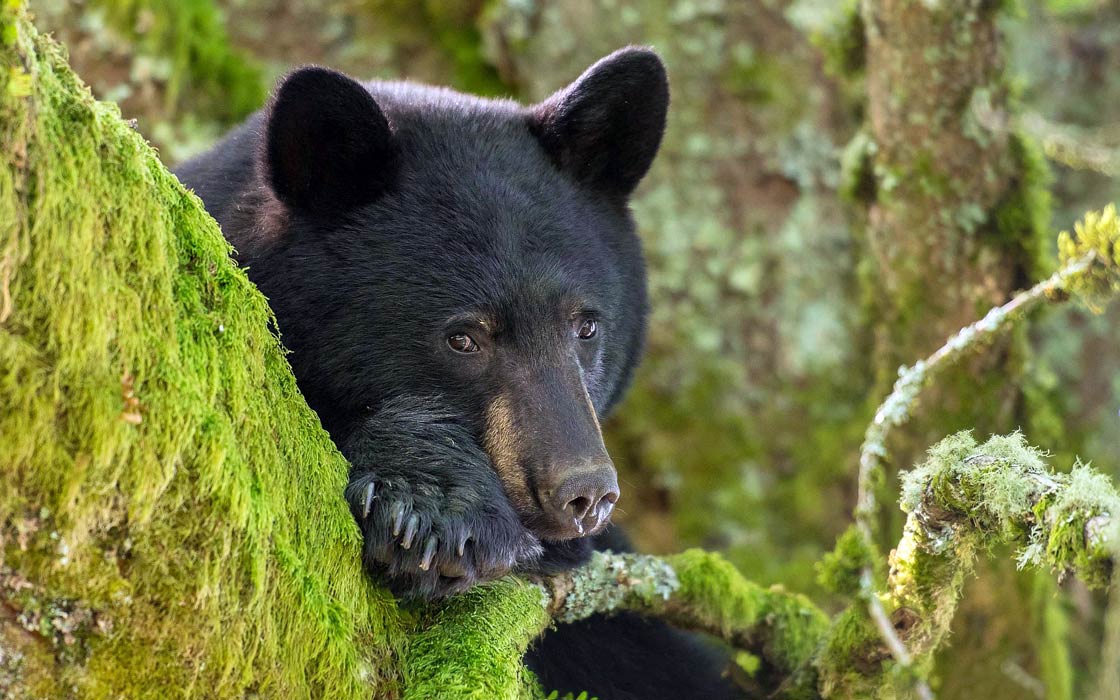
Fauna in Olympic National Park
Olympic National Park is home to a diverse array of fauna, including mammals, birds, reptiles, amphibians, and fish. The park’s temperate rainforest supports a variety of wildlife, including the Roosevelt elk, black bear, and the Olympic marmot. The Olympic Mountains provide habitat for species such as the mountain goat and the pika, while the park’s coastline is home to a variety of marine mammals, including sea otters, harbor seals, and gray whales. The park’s rivers and streams support runs of salmon and steelhead, and are also home to other species of fish and aquatic insects.
Olympic National Park is home to a wide variety of wildlife, including:
- Roosevelt Elk (Cervus canadensis roosevelti)
- American Black Bear (Ursus americanus)
- Mountain Goat (Oreamnos americanus)
- Gray Wolf (Canis lupus)
- Bobcat (Lynx rufus)
- Cougar (Puma concolor)
- River Otter (Lontra canadensis)
- Pacific Fisher (Pekania pennanti)
- Pine Marten (Martes americana)
- Marmot (Marmota flaviventris)
- Snowshoe Hare (Lepus americanus)
- Olympic Chipmunk (Tamias amoenus caurinus)
- Douglas Squirrel (Tamiasciurus douglasii)
- Bald Eagle (Haliaeetus leucocephalus)
- Northern Spotted Owl (Strix occidentalis caurina)
The park’s most iconic wildlife species is perhaps the Roosevelt elk, which can be found throughout the park’s forests and meadows. The park’s coastal areas are home to a variety of marine mammals, including harbor seals, sea lions, and gray whales. The park is also home to a variety of bird species, including the bald eagle, northern spotted owl, and a variety of songbirds and waterfowl.
The park’s fauna is adapted to the unique climate and geography of the Olympic Peninsula, with many species being found nowhere else in the world. The park’s wildlife is also an important part of the park’s ecology, helping to maintain the delicate balance of the park’s ecosystems.
The park’s diverse fauna supports a rich and varied ecosystem, including a variety of species that are unique to this area.
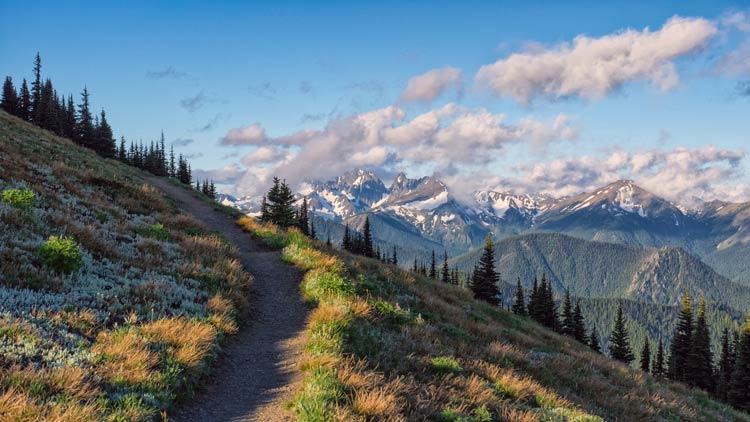
Tourism and tourist main attractions in the park
Olympic National Park is a popular tourist destination, attracting millions of visitors each year. The park offers a range of recreational opportunities, including hiking, camping, wildlife viewing, and scenic drives. Some of the main tourist attractions in the park include:
- Hurricane Ridge
A popular scenic drive and hiking destination offering panoramic views of the Olympic Mountains. - Hoh Rainforest
A temperate rainforest located in the park’s western region, known for its old-growth trees, lush vegetation, and diverse wildlife. - Sol Duc Hot Springs
A popular destination for soaking in hot springs and hiking in the surrounding forests and meadows. - Lake Crescent
A deep and scenic lake surrounded by forests and mountains, offering opportunities for boating, fishing, and hiking. - Rialto Beach
A popular beach located on the park’s rugged coast, known for its dramatic landscapes and wildlife viewing opportunities. - Quinault Rainforest
A temperate rainforest located in the park’s southern region, known for its lush vegetation, abundant wildlife, and scenic drives.
These are just a few examples of the many attractions that Olympic National Park has to offer. The park’s diverse landscapes and rich ecosystems provide a range of opportunities for outdoor recreation and exploration.
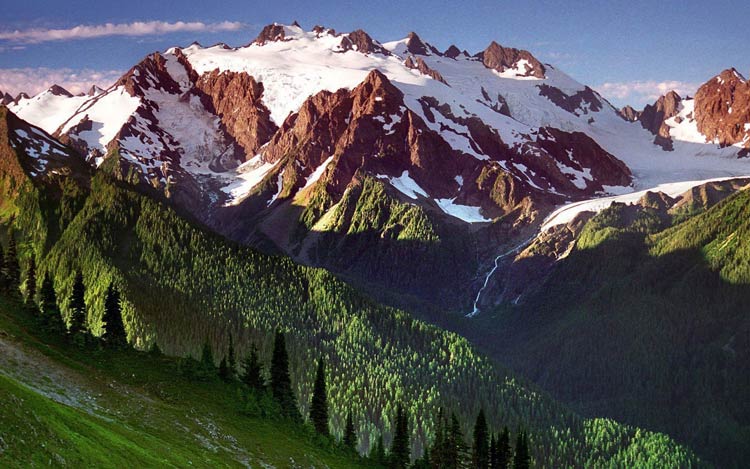
Elwha Ecosystem Restoration Project
The Elwha Ecosystem Restoration Project was a large-scale restoration effort aimed at removing two dams from the Elwha River in Olympic National Park, Washington, USA. The project was initiated in order to restore the natural salmon migration patterns and the ecological health of the river and its watershed. The removal of the dams was the largest dam removal project in the history of the United States, and was completed in 2014.
The project involved removing the Elwha Dam, built in 1913, and the Glines Canyon Dam, built in 1927. The removal of these two dams allowed the river to flow freely for the first time in over a century, and restored access to over 70 miles of spawning habitat for five species of Pacific salmon.
The Elwha Ecosystem Restoration Project has had a significant impact on the ecological health of the river and its watershed, and has helped to re-establish populations of native fish and other aquatic species. The project has also helped to restore the natural processes that shape the river and its floodplain, such as sediment transport and river meandering.
In addition to the ecological benefits, the Elwha Ecosystem Restoration Project has also had economic and cultural benefits for the local community. The restoration of the salmon populations has helped to re-establish a viable commercial and recreational fishing industry, and has also helped to revive cultural traditions that have been tied to salmon for generations.
The Elwha Ecosystem Restoration Project is a prime example of large-scale river restoration efforts, and serves as a model for similar projects in the United States and around the world.
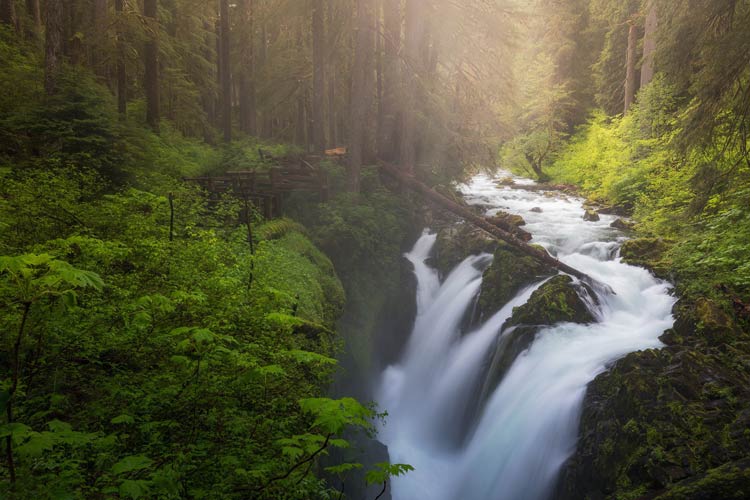
How To Reach To Olympic National Park?
There are several ways to reach Olympic National Park, depending on where you are coming from and what part of the park you are trying to access. Here are some common options:
- By car
Olympic National Park is located on the Olympic Peninsula in Washington State and is accessible by car from several directions. The park has several entrances, including the north entrance near Port Angeles, the west entrance near Forks, and the south entrance near Quinault. Major highways leading to the park include US 101 and State Route 101. - By air
The closest major airport to Olympic National Park is Seattle-Tacoma International Airport (SEA), which is located approximately 2.5 hours from the park. From there, visitors can rent a car or take public transportation to the park. - By ferry
Another option is to take a ferry from Seattle or the surrounding area to the Olympic Peninsula. The most common route is from Seattle to Bainbridge Island, and then from Bainbridge Island to the town of Port Angeles, near the park’s north entrance. - By public transportation
There are also several bus and shuttle options available for visitors who do not have access to a car. The Olympic Peninsula is served by several public transportation providers, including Clallam Transit and Jefferson Transit. There are also private shuttle services that operate in the area.
No matter how you choose to reach Olympic National Park, it’s important to plan ahead and be prepared for the terrain and weather conditions you may encounter. Some parts of the park are only accessible by unpaved roads or trails, and the weather can change quickly, so it’s important to bring appropriate clothing and equipment.
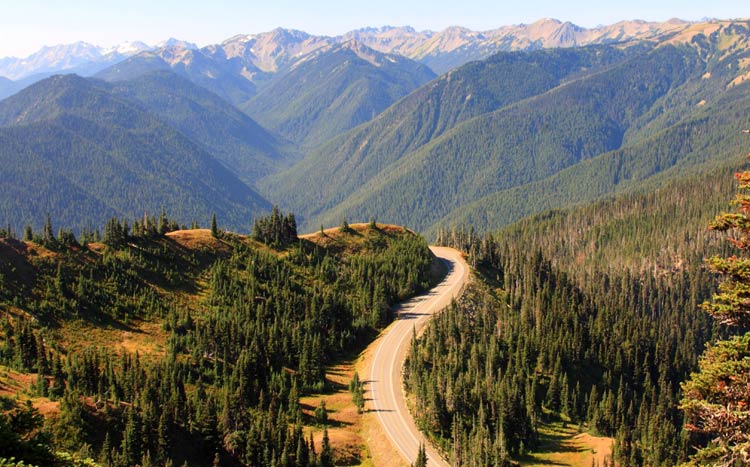
Best Time to Visit Olympic National Park
The best time to visit Olympic National Park largely depends on your interests and priorities, as the park offers different experiences depending on the season. Here are some things to consider:
- Summer (June-August)
This is the most popular time to visit Olympic National Park, as the weather is generally mild and the days are long. This is a great time for hiking, camping, and exploring the park’s beaches and lakes. However, be prepared for crowds, especially at popular destinations like Hurricane Ridge and the Hoh Rainforest. - Fall (September-November)
Fall is a quieter time to visit Olympic National Park, with fewer crowds and changing foliage. This is a great time for hiking and wildlife viewing, as animals like elk and deer become more active. The weather can be unpredictable, however, with rain and cooler temperatures becoming more common. - Winter (December-February)
Winter is a quieter time to visit Olympic National Park, with fewer crowds and snow covering many of the park’s higher elevations. This is a great time for snowshoeing, skiing, and other winter sports, as well as for enjoying the park’s hot springs and lodges. However, some parts of the park may be closed or inaccessible due to snow and ice. - Spring (March-May)
Spring is a beautiful time to visit Olympic National Park, with wildflowers blooming and waterfalls flowing to their fullest. This is a great time for hiking and birdwatching, as many migratory birds return to the park. However, the weather can be unpredictable, with rain and snow still possible in higher elevations.
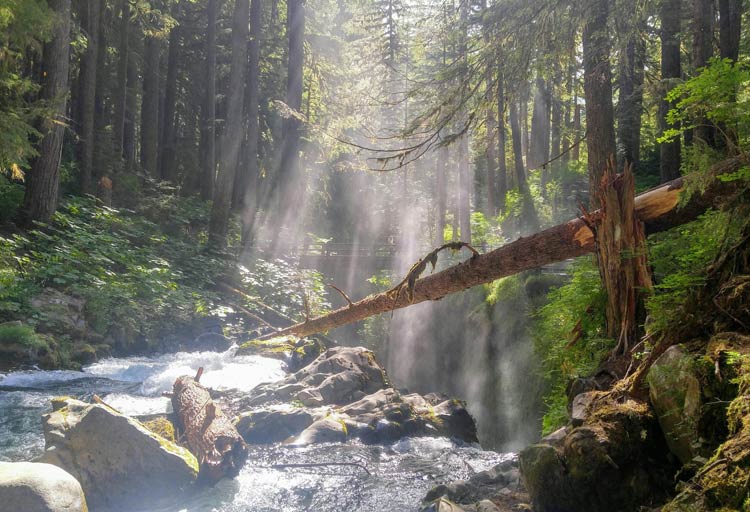
Conservation in Olympic National Park
Conservation is an important part of the mission of Olympic National Park. Here are some of the ways in which the park is working to protect its natural resources:
- Ecosystem restoration
The Elwha Ecosystem Restoration Project is a major undertaking in Olympic National Park that aims to restore the Elwha River and its surrounding ecosystem after the removal of two dams. The project includes restoring fish populations, monitoring water quality, and reintroducing native plant species. - Wildlife protection
Olympic National Park is home to a variety of wildlife, including several species that are considered threatened or endangered. The park works to protect these animals by enforcing regulations on hunting and fishing, monitoring populations, and restoring habitat. - Wilderness management
Much of Olympic National Park is designated wilderness, which means that it is protected and managed to preserve its natural character. This includes restricting motorized access and encouraging low-impact recreation practices. - Invasive species management
Invasive species can threaten the health of native ecosystems by outcompeting native plants and animals. Olympic National Park has an active program to manage invasive species, including removing non-native plants and animals and educating visitors about the importance of preventing their spread. - Climate change adaptation
Climate change is expected to have significant impacts on Olympic National Park, including changes in precipitation patterns, rising temperatures, and more frequent wildfires. The park is working to adapt to these changes by monitoring and mitigating their impacts, such as by restoring fire-adapted ecosystems and preparing for increased flood risk.
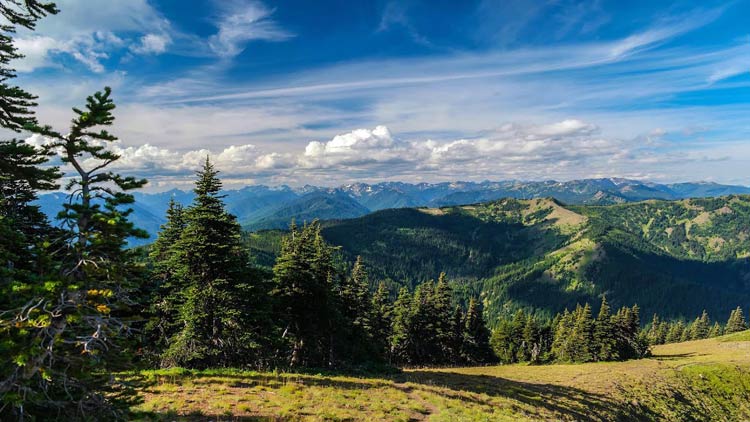
Olympic National Park in numbers
- Established: 1938
- Area: 1,442 square miles (3,733 square kilometers)
- Visitors: 2,499,177 (in 2020)
- Highest peak: Mount Olympus, 7,980 feet (2,432 meters)
- Number of glaciers: 266
- Rivers and streams: over 3,000 miles (4,800 kilometers)
- Lakes: over 600
- Plant species: over 1,450, including 8 species of conifers and over 800 species of wildflowers
- Animal species: over 300, including 73 mammal species, 296 bird species, 16 amphibian species, and 5 reptile species
- Designations: UNESCO World Heritage Site, International Biosphere Reserve, and United States Biosphere Reserve.
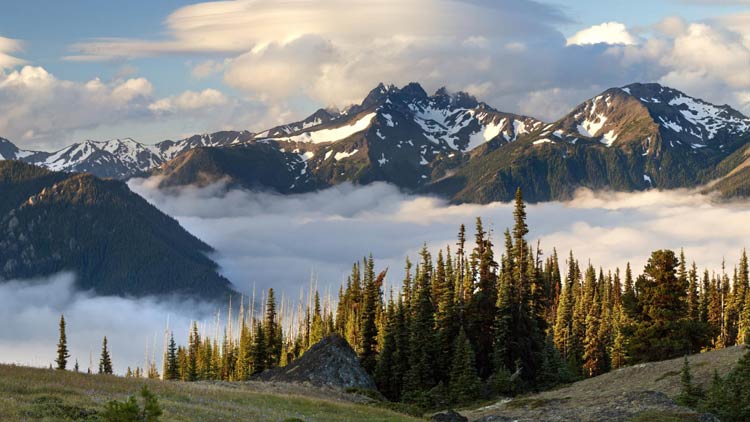
Interesting facts about Olympic National Park
- Olympic National Park is a UNESCO World Heritage Site and an International Biosphere Reserve, recognized for its unique and diverse ecosystems.
- The park is home to the largest remaining contiguous temperate rainforest in the continental United States, and supports a rich variety of plant and animal species.
- Olympic National Park is also home to several glaciers, which are relatively rare in the lower 48 states.
- The park’s coastline is more than 70 miles long, and features a rugged and scenic shoreline with a range of coastal ecosystems, including sandy beaches, rocky cliffs, and salt marshes.
- The park is home to several species of fish that are native only to the Olympic Peninsula region, including the Olympic mudminnow (Novumbra hubbsi) and the Beardslee trout (Oncorhynchus mykiss irideus f. beardsleei).
- The park’s mountainous landscape is also home to several species of mammals that are unique to the Olympic Peninsula region, including the Olympic marmot and the Olympic chipmunk.
- Olympic National Park was established in 1938, and has since been expanded to encompass nearly a million acres of land, making it one of the largest national parks in the United States.
- The park is located in a temperate marine climate, which results in a high level of rainfall, particularly in the western region of the park.
- The park is also known for its diverse cultural and historical resources, including Native American tribal lands, historic homesteads, and cultural landscapes.
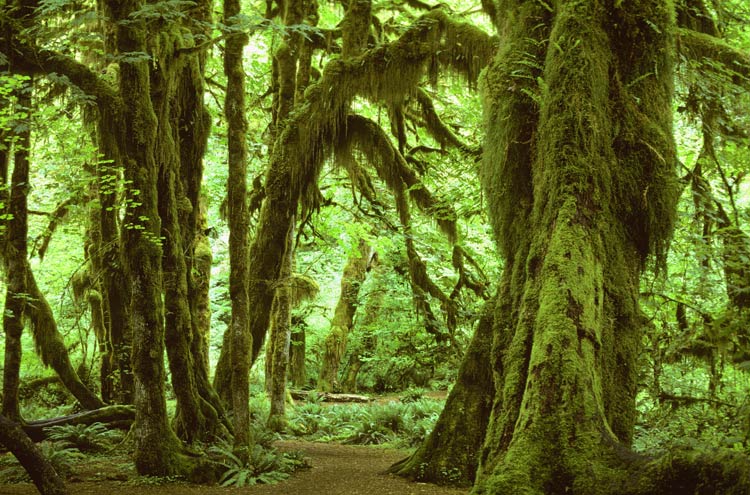
Q&A (questions and answers) about Olympic National Park
Q: Where is Olympic National Park located?
A: Olympic National Park is located in the state of Washington, USA.
Q: What type of ecosystems does Olympic National Park have?
A: Olympic National Park encompasses a range of diverse ecosystems, including glaciated mountains, a temperate rainforest, and a rugged coastline.
Q: What is the history of Olympic National Park?
A: Olympic National Park was established in 1938 and has since been expanded to encompass nearly a million acres of land. The park was initially established to protect the unique and diverse ecosystems found in the Olympic Peninsula region.
Q: What are some of the main attractions in Olympic National Park?
A: Some of the main attractions in Olympic National Park include Hurricane Ridge, Hoh Rainforest, Sol Duc Hot Springs, Lake Crescent, Rialto Beach, and Quinault Rainforest.
Q: What types of wildlife can be found in Olympic National Park?
A: Olympic National Park is home to a variety of wildlife, including the Roosevelt elk, black bear, mountain goat, pika, sea otters, harbor seals, and gray whales. The park’s rivers and streams are also home to runs of salmon and steelhead.
Q: What is the climate like in Olympic National Park?
A: Olympic National Park is located in a temperate marine climate, which results in a high level of rainfall, particularly in the western region of the park. The park’s temperature ranges from mild to cool, with the higher elevations of the park generally experiencing cooler temperatures.
Q: What are some interesting facts about Olympic National Park?
A: Olympic National Park is a UNESCO World Heritage Site and an International Biosphere Reserve, and is known for its large contiguous temperate rainforest, glaciers, and diverse wildlife. The park is also home to several species of fish and mammals that are unique to the Olympic Peninsula region.
